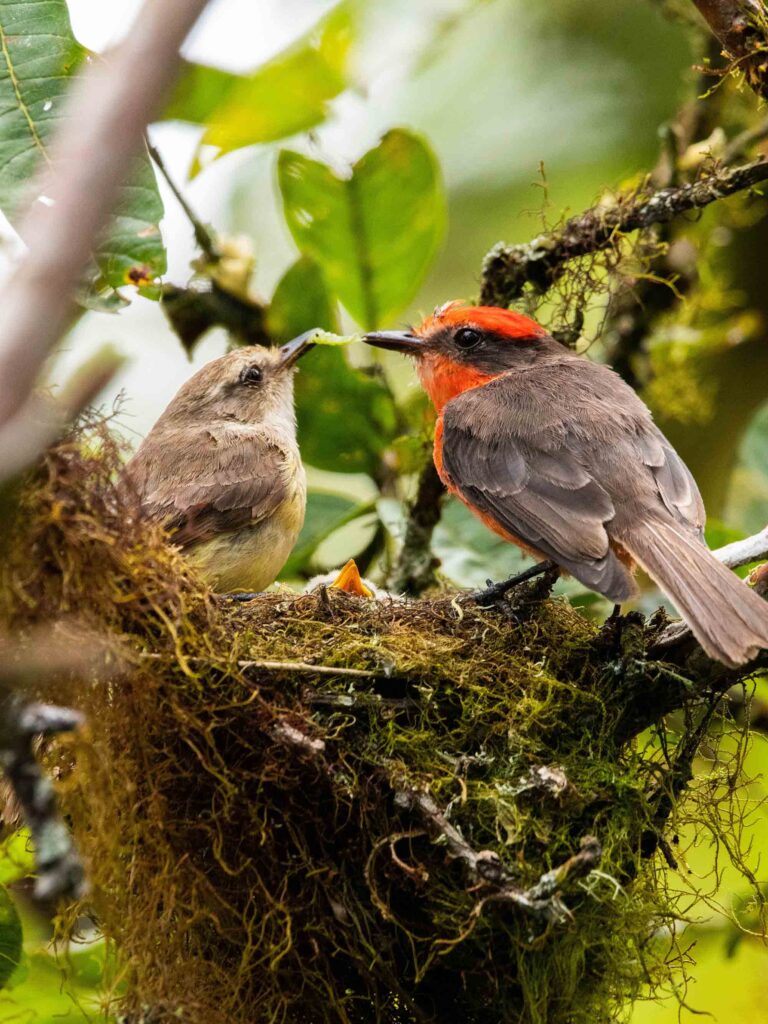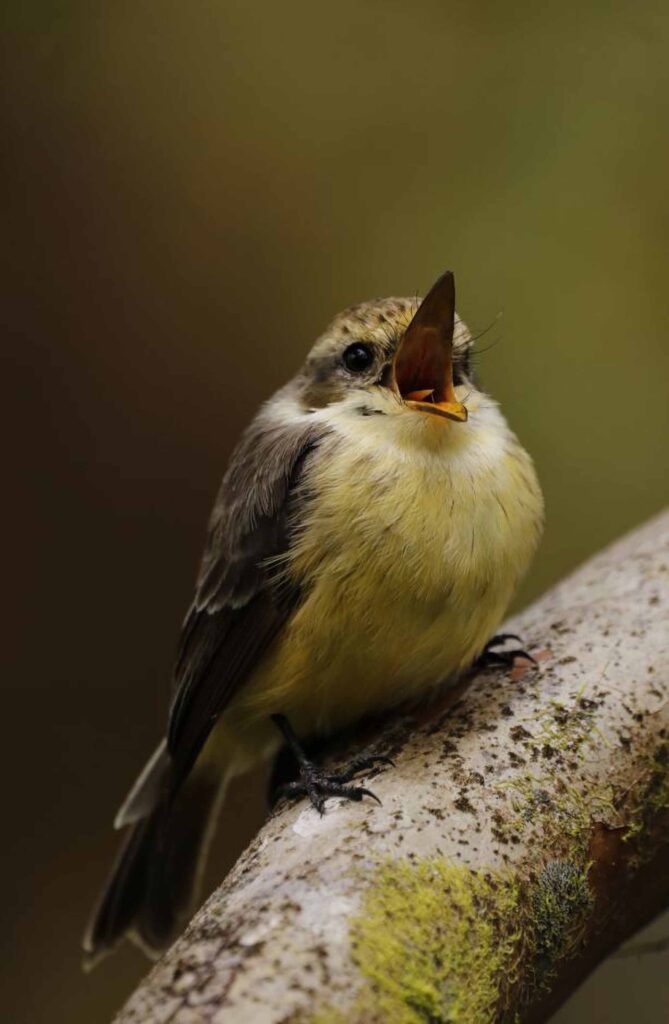The birth of seven adorable little vermillion flycatcher chicks classified as vulnerable by the IUCN has delighted conservationists on the Galapagos Islands.
The cute chicks hatched due a combined effort to remove invasive species from their habitat by the Charles Darwin Foundation and The Galapagos National Park Directorate (GNPD), backed by the University of Vienna.
This is according a statement Newsflash obtained from the Charles Darwin Foundation on 13th September.

(Charles Darwin Foundation/Newsflash)
Male little vermillion flycatchers, also known as Darwin’s flycatcher (Pyrocephalus nanus) are characterised by striking red feathers and black wings while females are grey and white chested.
Stable populations have been sighted on a few islands but the species’ numbers have rapidly declined and even disappeared over the last 20 years on islands such as Santiago and Floreana.
The species struggles to produce fledglings as access to food sources is restricted by thick walls of invasive wild blackberries that have sprung up in its habitat while hatchlings have a high mortality rate due to rats and the ever persistent Avian vampire fly (Philornis downsi), according to the statement.
These are reportedly the same threats that led to the extinction of the San Cristobal flycatcher that was first discovered in 1835 during Charles Darwin’s trip to the Galapagos Islands.

(Charles Darwin Foundation/Newsflash)
The seven new fledglings, along with eight fledglings from 2021 and six from 2020 have raised the average number of chicks per season from 2.6 hatchlings to seven.
Six young birds from previous breeding seasons were also observed in plots that are overseen by researchers in the highlands of the Santa Cruz Island in the volcanic archipelago.
The statement added: “(This) demonstrates that the labour-intensive management efforts to recover this fragile population are working.
“Almost all the nests built this year were in the areas under management suggesting that birds prefer these areas that have been cleared of invasive species.”
Birgit Fessl, who is the coordinator of the Galapagos Land Bird Conservation plan and has been studying birds on the islands for over 20 years, went on to say that a little vermilion flycatcher pair had been observed near a tourist visitor site on the islands.
She stated: “Encouragingly, we observed this year a Little Vermilion Flycatcher pair in an area where the GNPD has just started to restore the Scalesia forest, near to the Los Gemelos tourist visitor site.
“This pair had two successful nests leading them to become celebrities for many of the park wardens working on this project.”

(Charles Darwin Foundation/Newsflash)
To find out more about the author, editor or agency that supplied this story – please click below.
Story By: Alice Amelia Thomas, Sub-Editor: Joe Golder, Agency: Newsflash
The Ananova page is created by and dedicated to professional, independent freelance journalists. It is a place for us to showcase our work. When our news is sold to our media partners, we will include the link here.




